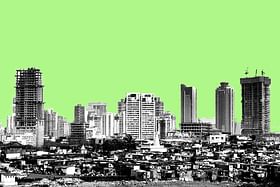The National Housing Bank (NHB) has announced the operationalisation of the Rs 10,000 crore Urban Infrastructure Development Fund (UIDF).
Union Finance Minister Nirmala Sitharaman had announced the establishment of the UIDF in her Budget 2023-24.
The Fund will provide a stable and predictable source of finance for the development of urban infrastructure in tier-2 and tier-3 cities.
The National Housing Bank (NHB) has announced the operationalisation of the Rs 10,000 crore Urban Infrastructure Development Fund (UIDF) — that was introduced in this year’s Budget.
Managed by NHB, Rs 10,000 crore, is the initial corpus of this fund.
In her budget speech, Union Finance Minister Nirmala Sitharaman had announced the establishment of the UIDF using the priority sector lending shortfall to ramp up urban infrastructure development in tier-2 and tier-3 cities.
Currently, the UDIF covers 459 tier-2 cities with a population ranging from 50,000 to less than a lakh, and 580 tier-3 cities with a population ranging from one lakh to less than a million, as per the 2011 census.
The UIDF has been launched to complement the efforts of state governments by providing a stable and predictable source of finance for the development of urban infrastructure in these mid-tier cities.
Projects In Focus Under The Fund
The focus of the projects funded by the UIDF will be on essential infrastructure such as sewerage and waste management, water supply and sanitation, and the construction and improvement of drains.
The Finance Department of States/UTs has been assigned as the nodal department responsible for implementing the fund.
Meanwhile, NHB is working to operationalise the fund through their regional offices located throughout the country.
Some of the activities eligible under UIDF include — water supply network projects (new, augmentation, rehabilitation), sewerage network projects, sold waste processing plants (new, augmentation), road infrastructure within area development projects, local area plans for de-congestion, heritage conservation, and transit-oriented development (TOD) for creating dense, mixed-use developments near public transportation.
UIDF also covers town planning schemes for greenfield development and parks with open gyms that do not involve major construction work.
Furthermore, housing, power and telecom, rolling stock like buses and trams, urban transport, health, and education institutions are excluded from the scope of UIDF.
Funding Pattern For Borrowers
The NHB has announced that both new and ongoing projects can access the UIDF as long as they are in line with the various urban missions and programs of the Government of India.
Project proposals for the UIDF must have a minimum size of Rs 5 crore (Rs 1 crore for northeast and hilly states) and a maximum size of Rs 100 crore.
The allocation of funds has been determined by considering the urban population percentage in the eligible towns and cities, in relation to the total population of eligible towns and cities in the country.
The current interest rate on loans from the UIDF is 5.25 per cent — 1.5 per cent lower than the bank rate.
Borrowers will have seven years to repay the loan principal, with five equal annual instalments. There will be a two-year moratorium period before repayment begins, and interest will be paid quarterly.
To ensure wider coverage and maximise the benefits of these low-cost funds — states have been advised to utilise resources from the grants provided by the 15th Finance Commission and existing schemes.
They are also encouraged to implement appropriate user charges when accessing the UIDF.


